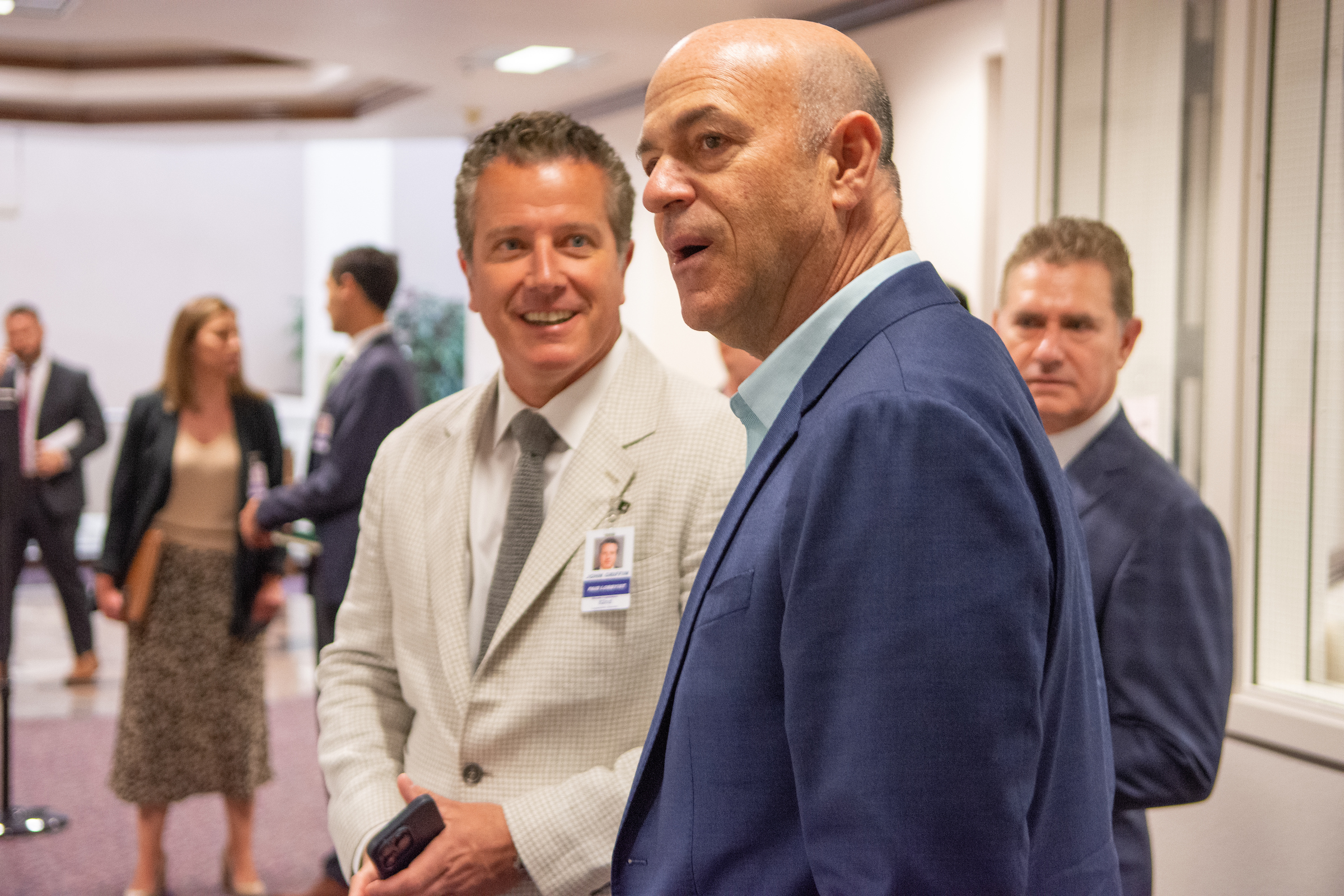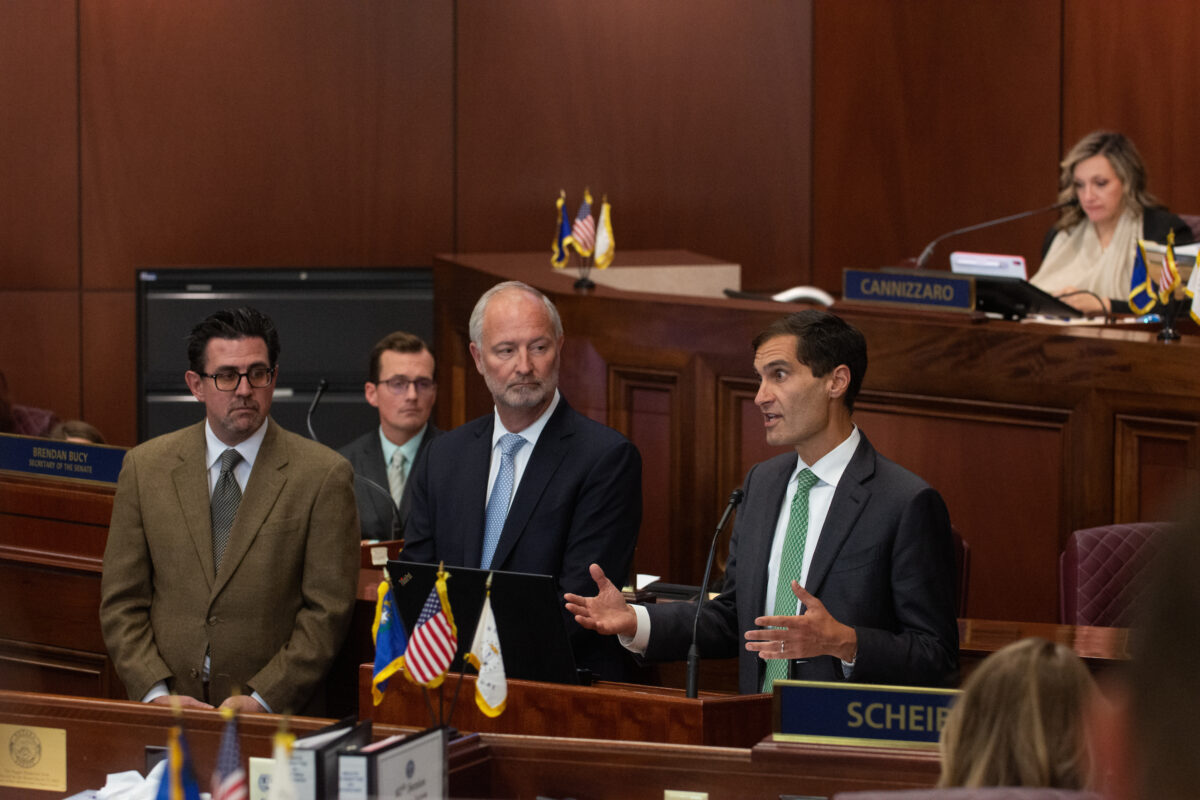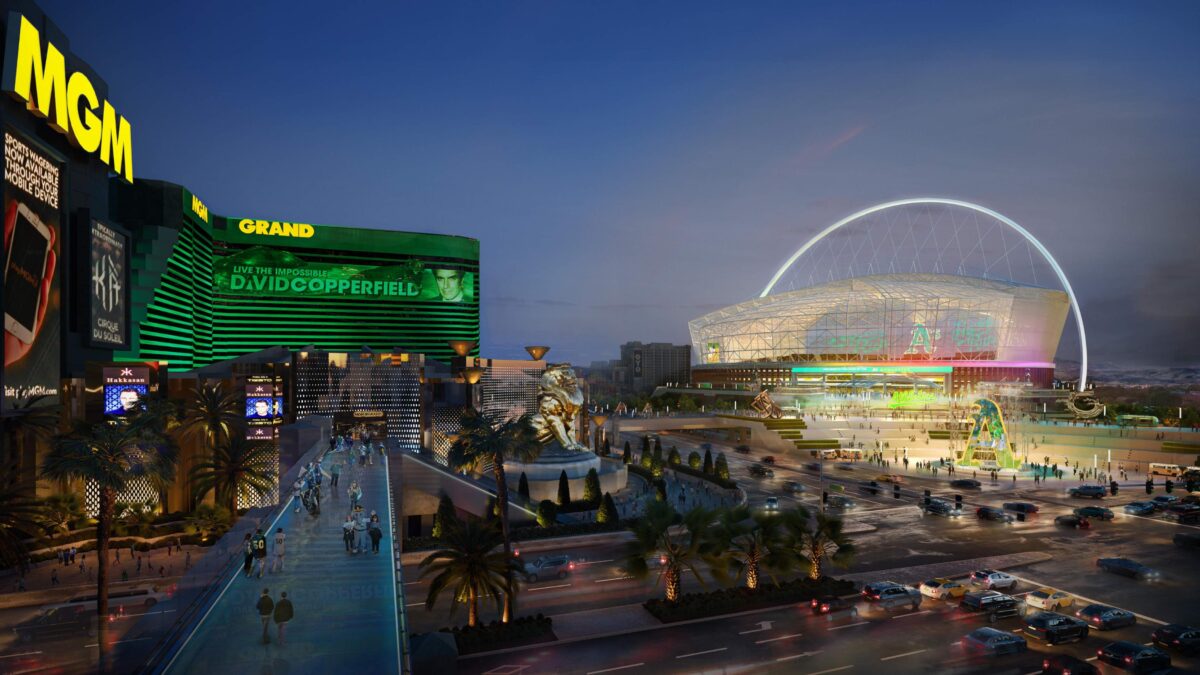Few details emerge on A’s plan to privately finance $1.1 billion for Vegas stadium

Last week, Nevada lawmakers dug deep into the details of public financing sought by the Oakland A’s for a proposed $1.5 billion stadium on the Las Vegas Strip, peppering backers of the stadium and team executives with dozens of questions on everything from tax policy to an envisioned community benefits agreement.
But there was one question legislators didn’t raise — just how the team, which has Major League Baseball’s lowest payroll and averages just over 8,000 fans per home game, will finance its $1.1 billion portion of the project — more than 75 percent of the cost.
Representatives working with the A’s said the full private funding details won’t be completed until after legislation authorizing up to $380 million in public financing is approved by the Legislature and signed by Gov. Joe Lombardo.
Legislators are discussing the stadium funding package during a special session in the form of SB1, a copy of SB509, which failed to pass in the 2023 regular session. The special session began Wednesday with a hearing in the State Senate and adjourned for the weekend a day later.
A source close to the negotiations said A’s management is working with investment firm Goldman Sachs on a combination of debt and equity financing covering no less than $1.1 billion to be finalized once a stadium development agreement is completed. A spokeswoman for the ballclub declined to comment on the private financing arrangement.
Neither members of management from the A’s nor lobbyists representing the team have publicly discussed during two legislative hearings how the ballclub will fund the vast majority of the costs for the 30,000-seat retractable roof stadium proposed for a 9-acre site that now houses a portion of the Tropicana Hotel and Casino.
Jeremy Aguero, a principal analyst at economic advisory firm Applied Analysis, which the A’s hired to conduct research on the proposed stadium, said the private financing piece requirements are outlined in SB1.
In Section 34 of the bill, the A’s are required to have “irrevocable financing in place” prior to Clark County issuing development bonds for the stadium. Among the requirements are letters of credit or commitments from banks that are “rated BBB+ or better by Standard & Poor’s Rating Services or Baa1 by Moody’s Investors Services.”
In a 47-page presentation to lawmakers, A’s representatives provided a funding structure for the stadium project that went into great detail on the $380 million in “Nevada incentives” — a combination of county-issued bonds and transferable tax credits.
The A’s contribution — $1.1 billion — was not explained.
When asked if the team had contacted sufficient financial resources to fully fund the team’s part of the financial package, Aguero said the question would be best answered by the A’s.
“It would seem premature to have the financing in place as required by the legislation,” he added.
A’s owner John Fisher has an estimated net worth of $2.2 billion. He is the founding partner of investment firm Sansome Partners and the youngest son of Gap founders Doris and Donald Fisher.
Fisher is a part-owner of Major League Soccer’s San Jose Earthquakes. A’s representatives said the private financing deal is similar to how the group built the team’s $100 million, 18,000-seat stadium at PayPal Park in 2015.
On May 31, two days after the initial hearing on the bill, Fisher and A’s President Dave Kaval spent time at the Legislature to discuss the stadium bill with lawmakers. Otherwise, A’s management has shied away from hearings, allowing lobbyists, economic advisors, labor leaders and Las Vegas tourism executives to speak on behalf of the franchise.

Money from other sources
If the legislation passes, the A’s would receive up to $175 million from real estate investment trust Gaming and Leisure Properties (GLPI) that would go toward “certain shared improvements within the future development in exchange for a commensurate rent increase.” GLPI owns the 35-acre site that includes the planned 9-acre stadium parcel. Tropicana operator Bally’s Corp. has said it will demolish the Rat Pack-era resort and build a new hotel-casino on the site after the stadium opens.
Representatives from GLPI and Bally’s declined requests for comment Monday.
The A’s negotiation has similarities to Nevada’s 2016 special legislative session, when lawmakers approved a $750 million public financing package to help construct the $1.9 billion required (for what is now Allegiant Stadium) to help move the Oakland Raiders to Las Vegas. The stadium development agreement was completed soon after the approved legislation was signed by then-Gov. Brian Sandoval.
Initially, the Raiders were to provide $500 million toward construction costs and the stadium was to be operated by Las Vegas Sands Corp., with the company’s late chairman and founder, Sheldon Adelson, contributing $650 million.
Adelson and Las Vegas Sands later pulled its $650 million contribution off the table and backed out of the agreement. But the Raiders secured a loan from Bank of America to cover the casino executive’s contribution. Goldman Sachs was initially involved in the deal on behalf of the Raiders.

PSLs not included
The Raiders found additional revenue from the sale of personal seat licenses (PSLs) to season ticket holders. The extra costs, which ranged from $500 to $75,000, gave seat holders the right to buy tickets for their seats at other stadium events, such as concerts.
According to the Las Vegas Stadium Authority, the Raiders initially budgeted $250 million in PSL revenue, but the final figure was $549.2 million — more than double the initial prediction. Along with a $200 million low-interest loan from the NFL’s G-4 program, the required Bank of America financing was reduced to $455.7 million.
The A’s private funding might not include PSL revenue.
The two most-recently built Major League Baseball stadiums, Truist Field in Atlanta and Globe Life Field in Arlington, Texas, do not require season ticket holders to pay PSL costs. Truist Field, home of the Atlanta Braves, opened in 2016 at a cost of $672 million, of which $300 million was funded by Cobb County.
Globe Life, the Texas Rangers' $1.2 billion new home, opened in 2020. The City of Arlington provided $600 million in public financing and the Rangers pay the city $2 million in annual rent.
Neil deMause, the author of Field of Schemes, a book about public subsidies for stadiums and the name of a companion website for sports stadium news and analysis, said PSLs are more common in football than in baseball because of the sport’s popularity. NFL teams have up to nine regular season home games, as opposed to 82 regular season baseball home games.
“The whole idea behind PSLs is to tell fans, ‘You’re never going to get tickets if you don’t pay for a seat license, so cough up the dough, and at least maybe you’ll get some of it back when you re-sell your PSL,’” deMause said in an email.
He suggested the A’s might get extra money from season ticket sales for premium seats, such as a club level or behind home plate, all of which offer special services.
“Even with a 30,000-seat stadium, it would be laughable to pretend that Las Vegas A’s tickets would be hard to come by. Quickly, the value of PSLs would plummet to zero,” deMause said. “They might get a little money requiring PSLs for premium locations, but it’s not going to be anywhere near what the Raiders got.”
Correction on 6/15/2023 at 11:23 a.m. A previous version of this story reported John Fisher is a member of the Gap board of directors. He is not currently a member of the board.
